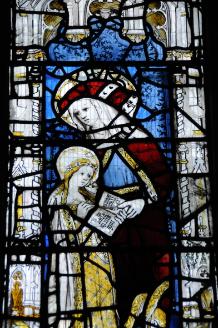Literary Networks of the Vicars Choral and the Clerical Proletariat in Late Medieval York
Tuesday 7 March 2017, 6.00PM
Speaker(s): Kathryn Kerby-Fulton (Notre Dame)
When Margery Kempe visited York Minster in 1417 she was befriended by two choral vicarii, John Kendale “and another preste whech song be the bischopys grave.” The grave was Richard Scrope’s, executed under Henry IV, and his semi-suppressed cult still no doubt a matter of some delicacy. Kendale and his unnamed fellow here were likely not only counseling Kempe, but telling her about the Minster’s history and saint’s cults – part of the job of cathedral vicarii. Kendale was also an owner of Piers Plowman, and if we link such information about the literary interests of the vicarii with some of the contemporary Latin writings produced at York Minster, we get a rare view of literary circles of the clerks lower down the ladder in the Minster’s local pride in its history (both legendary and more recent), its saints, and its zeal to protect its power and privileges. Other survivals relate directly to the Scrope execution, such as poems of traumatic mourning in heavily liturgical Latin (his death was personally witnessed by many of his cathedral familia in 1405, as its chronicles show), and fragmentary in-house chronicles – some of it even versified, as if for memorization. Despite the censorship efforts of Archbishop of Canterbury, Thomas Arundel, a range of literature sprang up from within the the Minster, giving us a rare chance to look at the multilingual literary production within a normally invisible group. Comparisons will be made to surviving poetry from manuscripts connected to Norwich Cathedral Priory or London’s St. Paul’s, containing poems about the woes of chorister life or clerical isolation.
Location: K/133, King's Manor, Exhibition Square, York
Email: cms-office@york.ac.uk

